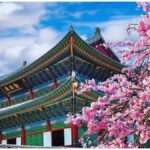29
Jun
5 Iconic Destinations Where Photography is Prohibited
In today’s digital age, photography is a key part of travel, allowing tourists to capture and share their experiences. However, there are some iconic destinations where taking photos is strictly prohibited. Ignoring these rules can lead to disrespecting the site’s significance and even legal trouble. Here are five renowned tourist spots where you’ll need to keep your camera tucked away.
- The Sistine Chapel, Vatican City
The Sistine Chapel, famous for Michelangelo’s stunning ceiling frescoes, is a must-visit in Vatican City. Despite the overwhelming desire to capture these masterpieces, photography is strictly forbidden. This rule helps preserve the delicate artwork from potential damage caused by camera flashes and maintains an atmosphere of reverence and contemplation. - The Taj Mahal, India
The Taj Mahal in Agra is an architectural wonder and a symbol of eternal love. While you can freely photograph its gardens and exterior, photography inside the main mausoleum is prohibited. This measure protects the intricate marble work and maintains the site’s solemnity, as it is a tomb dedicated to Mumtaz Mahal, the beloved wife of Emperor Shah Jahan. Visitors are urged to respect the sanctity of the monument and enjoy its serene ambiance without the distraction of cameras.

- Eiffel Tower at Night, France
The Eiffel Tower is a global icon, drawing millions of visitors to Paris each year. Daytime photography is welcomed, but taking photos of the tower at night is prohibited due to copyright laws. The lighting display, created by Pierre Bideau, is considered a separate artistic work protected by copyright. Unauthorized commercial use of nighttime photos is illegal without permission, a rule that protects the designer’s rights and the landmark’s aesthetic integrity. - Uluru (Ayers Rock), Australia
Uluru, or Ayers Rock, is a massive sandstone monolith in Australia’s Northern Territory, sacred to the indigenous Anangu people. To honor their cultural beliefs, certain areas of Uluru are off-limits to photography. Climbing Uluru has also been banned since October 2019, following the wishes of the Anangu community. Visitors are encouraged to appreciate Uluru’s beauty and cultural heritage through guided tours and educational programs. - The Alamo, USA
The Alamo in San Antonio, Texas, is a historic site commemorating a key battle in the Texas Revolution. Photography is banned inside the Alamo church to preserve its solemnity and honor the memory of the Texan defenders who perished there. This restriction also protects the delicate artifacts and historical documents housed within the church.
Visiting these sites without a camera can enhance the experience, allowing you to fully immerse yourself in their history, culture, and beauty.






